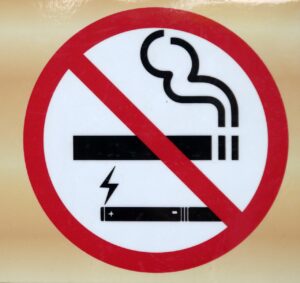
Smoking is unhealthy; it is a risky habit that introduces toxic chemicals into your body when you inhale and exhale burning material in the form of tobacco. Use of cigarettes, cigars, or pipes are all forms of smoking. Due to several reasons like stress release or peer pressure, people smoke as a habit.
Smoking begins to affect your mouth first and then damages your lungs or heart. The Effects of smoking are observed in our bodies, such as yellow teeth, foul odor, and even severe problems such as gum disease and oral cancer. Smoking impacts your immune system and raises the risk of infection, too. Smokers also lose their teeth early because of gum disease.
The Immediate Effects of Smoking on Oral Health
The second you begin smoking, it starts to work on your mouth. One of the earliest things is dry mouth; it decreases saliva flow. Due to reduced saliva flow, your mouth becomes more susceptible to cavities and gum infections.
Smoking is also one of the causes of bad breath. This happens because the chemicals in tobacco stick to the inside of your mouth, leaving behind an unpleasant smell that brushing alone can’t fix.
Smoking sometimes also affects the sense of taste and even smell. Over-smoking makes your taste buds less sensitive, and food becomes less pleasant. Although this may be minor at first, after some time, these symptoms increase.
How Smoking Leads to Gum Disease
Smoking lowers your immune system. Gum disease from tobacco, also referred to as periodontal disease, is six times more likely to be acquired by smokers than non-smokers.
Your body also becomes weak by too much smoking. It is hard to overcome infections in your gums if you are a chain smoker. The healing process is also slowed by decreased blood supply.
Most smokers are unaware of gum disease until a physician diagnoses it. If not treated, it may lead to tooth loss and even increase your risk of getting heart disease or stroke.
Smoking and Tooth Discoloration
The color of teeth indicates the mark of smokers. Tooth discoloration indicates your teeth can turn yellow or even brown with time. Tooth discoloration is caused due to smoking. In tooth discoloration, nicotine and tar are the main culprits that are present in tobacco. These substances cling to the outer surface of your teeth, particularly the enamel, and leave tenacious stains that ordinary brushing cannot erase.
Firstly, your teeth start looking yellowish, making your smile dull and unhealthy-looking if the stains accumulate. It’s hard to get away from the deep stains of smoking. Even the most enthusiastic attempts with teeth-whitening toothpaste or household remedies won’t work well. You’ll most likely have to see a dentist for professional whitening.
Even after professional whitening, the stains may return quickly if you keep smoking after whitening your teeth, sometimes even quicker. That’s why quitting smoking is one of the good ways you can maintain your teeth to look clean, bright, and healthy in the long term.
Smoking and Oral Cancer
Smoking increases the risk of developing oral cancer by a significant factor. It is the primary risk factor for smoking. The danger escalates with the quantity and type of tobacco consumed. More than 70 harmful chemicals come from smoking, most of which have been identified to be carcinogenic.
Smoking may cause cancer in mouth areas such as lips, tongue, cheeks, gums, and roof or floor of the mouth. If you quit smoking, it will decrease your risk of oral cancer, whereas early discovery matters that reduces your risk long-term.
Impact on Dental Treatments
Smokers find dental procedures more challenging and less effective. The process of healing is slow in smokers after dental procedures such as tooth extractions or dental implants since tobacco impedes the flow of blood and slows tissue healing.
Smoking weakens the immune system; it also promotes infection. It is challenging for smokers to recover from bacteria and heal adequately after treatment.
Due to these risks, smokers can defer or avoid particular treatments, particularly if the procedure depends on having healthy gums, such as implants or gum surgery. Smoking cessation would significantly enhance the outcomes of treatment as well as facilitate recovery.
Maintaining Oral Health as a Smoker
Stopping smoking is a fine way of taking care of healthy oral health. You should take conscientious care in brushing twice a day, flossing, mouth washing, and frequent visits to the dentist. If you are always smoking, you must take extra caution in your everyday oral hygiene regimen. Daily, floss cleans the gaps between your teeth where your toothbrush cannot go, keeping you away from gum disease. Antibacterial mouthwash reduces the amount of harmful bacteria.
For professional cleanings and check-ups, visit your dentist regularly, at least twice a year. Dentists can detect the early stages of oral cancer, which is crucial in the case of smokers—special gum treatment to keep your mouth as healthy as can be while working towards quitting.
Final thoughts
The effect of smoking on your teeth and oral health is profound. Smoking doesn’t kill your smile but also injures your lungs or heart. From bad breath and yellowing teeth to life-threatening diseases such as oral cancer, smoking is the root cause of all. The sooner you quit smoking, the greater your chances of reversing some of the harm and regaining your oral well-being.
Consult your doctor or dentist if you’re struggling to quit smoking. There are many therapies available for nicotine replacement that can break the habit of smoking. Remember, a healthy mouth is essential for a healthy body, and it all starts with the decision to quit.


























